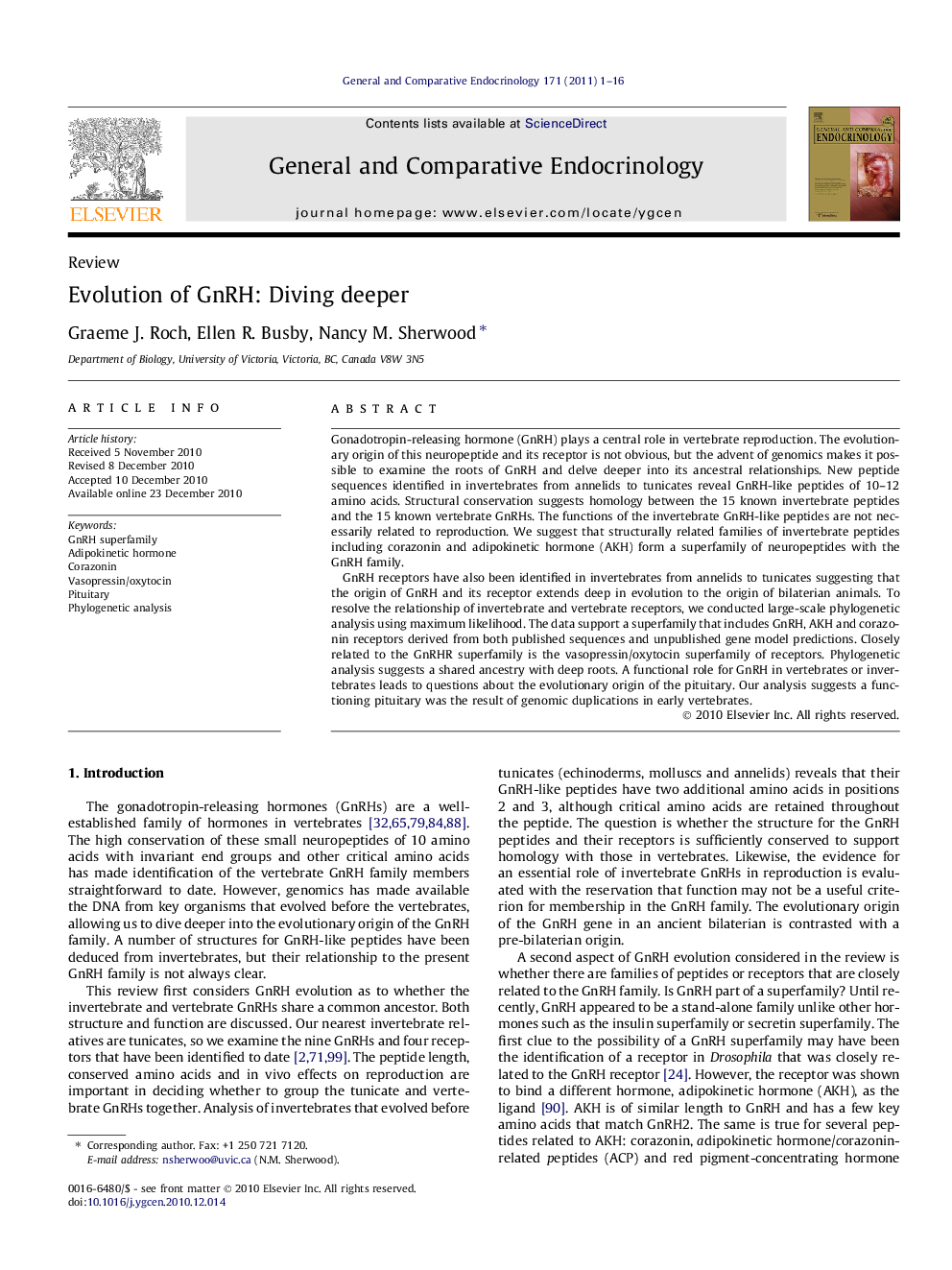| Article ID | Journal | Published Year | Pages | File Type |
|---|---|---|---|---|
| 2800949 | General and Comparative Endocrinology | 2011 | 16 Pages |
Gonadotropin-releasing hormone (GnRH) plays a central role in vertebrate reproduction. The evolutionary origin of this neuropeptide and its receptor is not obvious, but the advent of genomics makes it possible to examine the roots of GnRH and delve deeper into its ancestral relationships. New peptide sequences identified in invertebrates from annelids to tunicates reveal GnRH-like peptides of 10–12 amino acids. Structural conservation suggests homology between the 15 known invertebrate peptides and the 15 known vertebrate GnRHs. The functions of the invertebrate GnRH-like peptides are not necessarily related to reproduction. We suggest that structurally related families of invertebrate peptides including corazonin and adipokinetic hormone (AKH) form a superfamily of neuropeptides with the GnRH family.GnRH receptors have also been identified in invertebrates from annelids to tunicates suggesting that the origin of GnRH and its receptor extends deep in evolution to the origin of bilaterian animals. To resolve the relationship of invertebrate and vertebrate receptors, we conducted large-scale phylogenetic analysis using maximum likelihood. The data support a superfamily that includes GnRH, AKH and corazonin receptors derived from both published sequences and unpublished gene model predictions. Closely related to the GnRHR superfamily is the vasopressin/oxytocin superfamily of receptors. Phylogenetic analysis suggests a shared ancestry with deep roots. A functional role for GnRH in vertebrates or invertebrates leads to questions about the evolutionary origin of the pituitary. Our analysis suggests a functioning pituitary was the result of genomic duplications in early vertebrates.
Research highlights► GnRH receptors form a superfamily with corazonin and AKH receptor families. ► GnRH and its receptor evolved near origin of bilaterians. ► Phylogenetic analysis suggests shared ancestry for GnRH and VP/OT receptors. ► Functioning pituitary is likely to be a vertebrate innovation.
